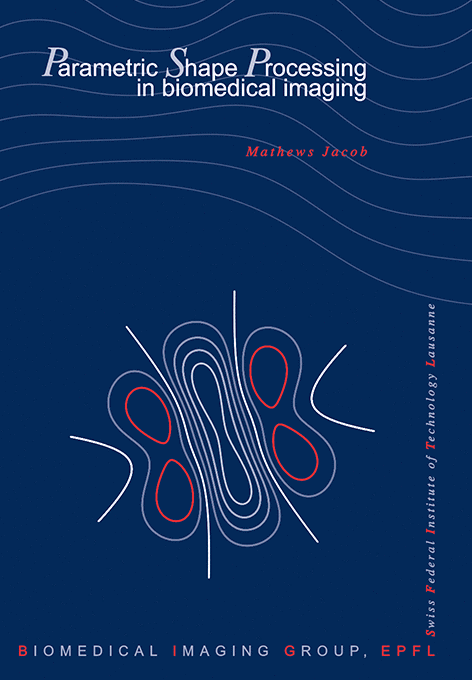Parametric Shape Processing in Biomedical Imaging
M. Jacob
École polytechnique fédérale de Lausanne, EPFL Thesis no. 2857 (2003), 192 p., September 30, 2003.
In this thesis, we present a coherent and consistent approach for the estimation of shape and shape attributes from noisy images. As compared to the traditional sequential approach, our scheme is centered on a shape model which drives the feature extraction, shape optimization, and the attribute evaluation modules.
In the first section, we deal with the detection of image features that guide the shape-extraction process. We propose a general approach for the design of 2-D feature detectors from a class of steerable functions, based on the optimization of a Canny-like criterion. As compared to previous computational designs, our approach is truly 2-D and yields more orientation selective detectors.
We then address the estimation of the global shape from an image. Specifically, we propose to use cubic-spline-based parametric active contour models to solve two shape-extraction problems: (i) the segmentation of closed objects and (ii) the 3-D reconstruction of DNA filaments from their stereo cryo-electron micrographs. We present several enhancements of existing snake algorithms for segmentation. For the detection of 3-D DNA filaments from their orthogonal projections, we introduce the concept of projection-steerable matched filtering. We then use a 3-D snake algorithm to reconstruct the shape.
Next, we analyze the efficiency of curve representations using refinable basis functions for the description of shape boundaries. We derive an exact expression for the error when we approximate a periodic signal in a scaling-function basis. Finally, we present a method for the exact computation of the area moments of such shapes.

@PHDTHESIS(http://bigwww.epfl.ch/publications/jacob0302.html,
AUTHOR="Jacob, M.",
TITLE="Parametric Shape Processing in Biomedical Imaging",
SCHOOL="{\'{E}}cole polytechnique f{\'{e}}d{\'{e}}rale de {L}ausanne
({EPFL})",
YEAR="2003",
type="{EPFL} Thesis no.\ 2857 (2003), 192 p.",
address="",
month="September 30,",
note="")